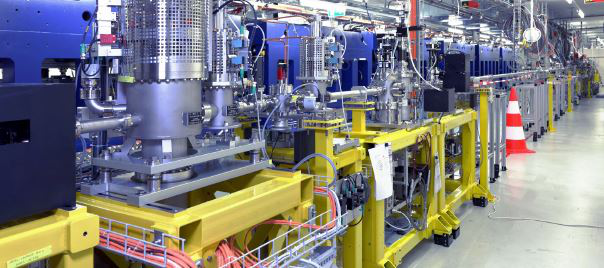Speaker
Description
We report on the development of an accurate and flexible concept to compensate for two-dimensional slope errors of mirrors or reflective gratings as used in wavelength-dispersive soft X-ray spectroscopy. Our approach enables an ultra-high spectral resolving power with low-cost optical components [1].
Modern soft X-ray spectrometers often use a toroidal mirror in combination with a variable line space grating. However, the curved mirror / grating substrate typically suffers from figure errors, leading to an aberrated wavefront. In close analogy to computer-generated holograms, that phase distortions are converted into a customized groove structure of the grating, the so-called “diffractive wavefront corrector”. Either the probed height profile (ex situ) of the substrate or deterministic phase retrieval from the intensity distribution along the propagating X-ray beam (in situ) may be used to derive the phase [2].
We consider popular instrumental configurations, like the “Hettrick-Underwood” setup or the compact “all-in-one” device, where the grating is inscribed in the curved mirror, and apply an appropriate variety of experimental procedures and the associated computational framework to evaluate the optical path difference (OPD). This function yields the grating vector field of the DWC as its gradient.
Characteristic, slightly aperiodic and – in general – asymmetric groove structures are obtained, which differ from the regular line density distribution of, e.g., analogous reflection zone plates on a scale of ~ µm. Lamellar gratings of that kind may be fabricated conveniently by direct laser writing, especially in their three-dimensional (3D) implementation on a curved substrate.
Ray tracing simulations of our DWC spectrometers predict an energy resolution which is pushed close to the diffraction limit around the design energy, while the photon flux of the initial, uncorrected instrument can be maintained.
This work is funded by the Bundesministerium für Wirtschaft und Energie within the project “NeuGaR” (ZF4302303SY8).
[1] C. Braig, J. Probst, E. Langlotz, I. Rahneberg, M. Kühnel, A. Erko, T. Krist, and C. Seifert, “Diffraction compensation of slope errors on strongly curved grating substrates,” Proc. SPIE 11109, 111090U (2019).
[2] J. Probst, C. Braig, E. Langlotz, I. Rahneberg, M. Kühnel, T. Zeschke, F. Siewert, T. Krist, and A. Erko, “Conception of diffractive wavefront correction for XUV and soft X-ray spectroscopy,” Appl. Opt. 59, 2580 – 2590 (2020).

